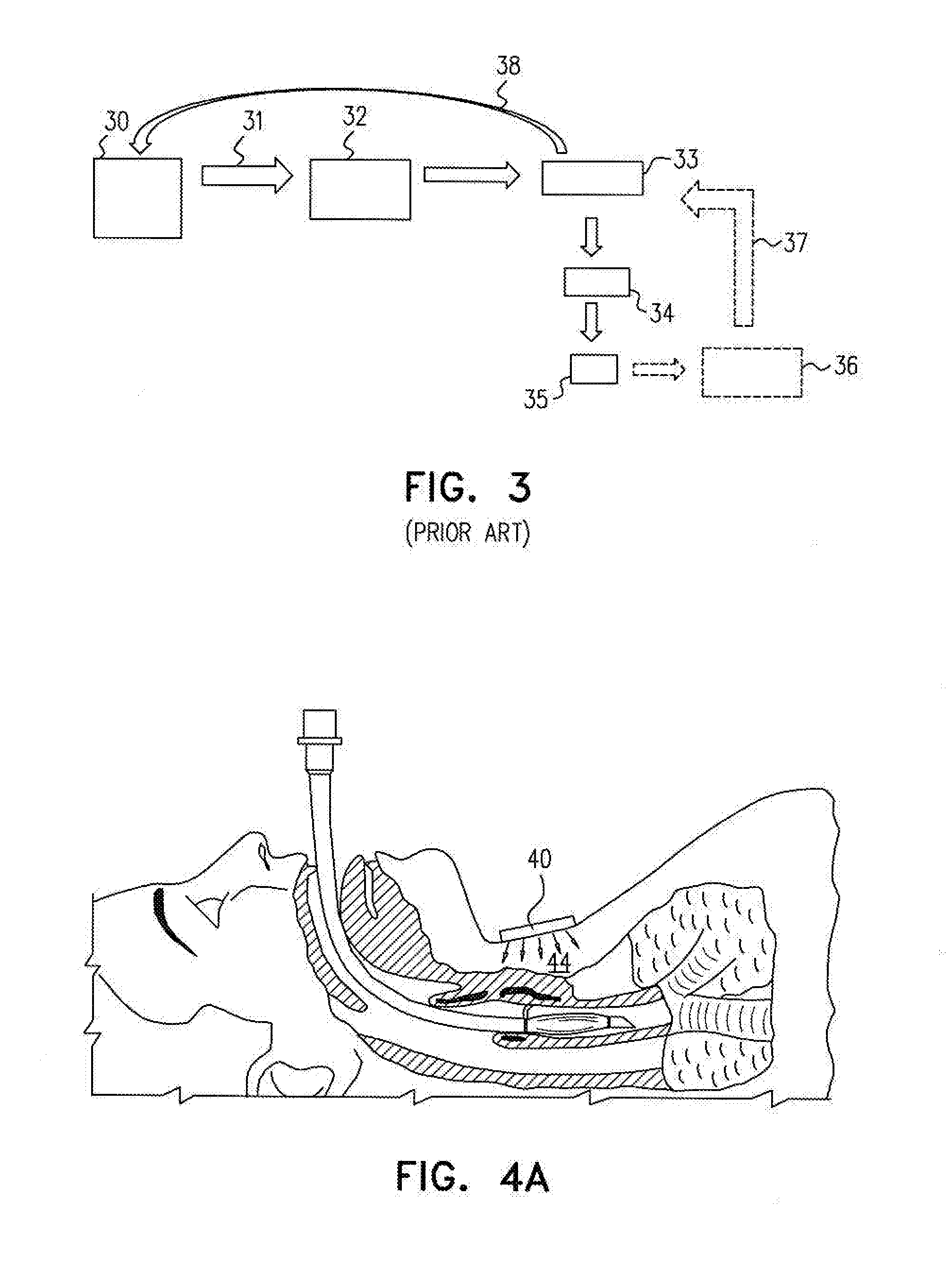Guided endotracheal intubation system
a technology of endotracheal intubation and guide tube, which is applied in the field of endotracheal intubation, can solve the problems of death and disability, risk of accidental misplacement of endotracheal tube into esophagus, and serious brain damage or death, and achieves the effect of effective discrimination and control, and simple low-cost manufactur
- Summary
- Abstract
- Description
- Claims
- Application Information
AI Technical Summary
Benefits of technology
Problems solved by technology
Method used
Image
Examples
Embodiment Construction
[0033]Reference is now made to FIG. 1, which illustrates schematically a conventional endotracheal procedure being performed on a patient 10. The trachea 11 is shown in its location in front of the esophagus 12, and an endotracheal intubation tube 13 has been successfully inserted past the epiglottis 14 and past the vocal chords 15 which are located at the junction of the trachea 11 and the esophagus 12, into the trachea. The problem of successfully negotiating the junction of the trachea and the esophagus is clear from FIG. 1. In commonly used procedures, the attending personnel manipulate the intubation tube into its correct position in the trachea by endoscopically viewing the progress of the distal tip of the intubation tube using illumination conveyed internally down the intubation tube assembly.
[0034]Reference is now made to FIG. 2, which is a schematic view of a prior art sensing system for tracheal intubation, as described in the above mentioned U.S. Pat. No. 5,560,351 to Gr...
PUM
 Login to View More
Login to View More Abstract
Description
Claims
Application Information
 Login to View More
Login to View More - R&D
- Intellectual Property
- Life Sciences
- Materials
- Tech Scout
- Unparalleled Data Quality
- Higher Quality Content
- 60% Fewer Hallucinations
Browse by: Latest US Patents, China's latest patents, Technical Efficacy Thesaurus, Application Domain, Technology Topic, Popular Technical Reports.
© 2025 PatSnap. All rights reserved.Legal|Privacy policy|Modern Slavery Act Transparency Statement|Sitemap|About US| Contact US: help@patsnap.com



